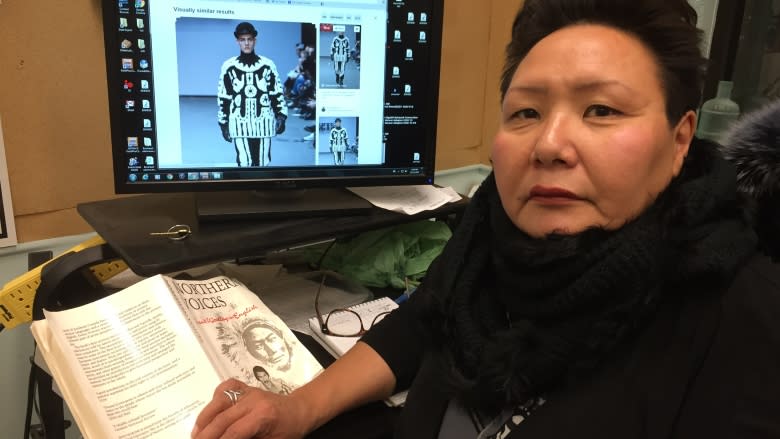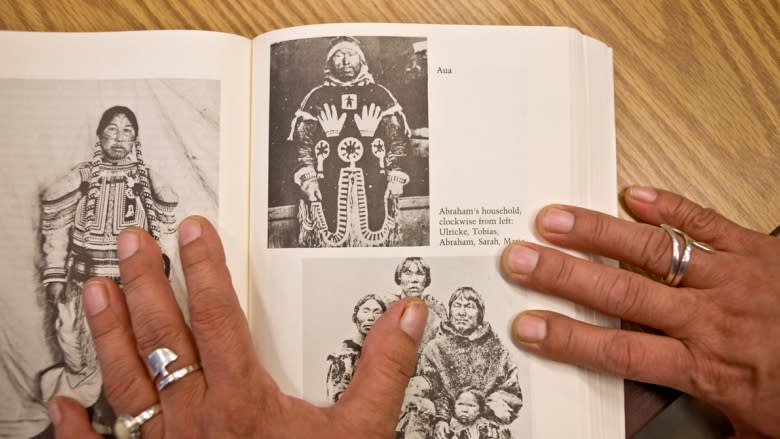KTZ fashion under fire for using Inuit design without family's consent
The U.K.-based fashion label KTZ's fall 2015 men's collection includes a number of garments based on traditional Inuit designs and a sweater that appears to be a replica of a shaman's jacket, which a Nunavut woman says was used without her family's consent.
"I was in shock, I was furious, I was angry," said Salome Awa, who works as a morning show producer at CBC Nunavut.
"This is my great-grandfather's sacred garment copied right down to the tee."
It's the second year in a row that KTZ has been accused of copying a garment based on an indigenous design. Last year it came under fire for allegedly copying a dress from Bethany Yellowtail, a Northern Cheyenne/Crow designer from Montana. Twitter erupted with support for Yellowtail.
According to Awa, the original design, from 1922, was envisioned by her great-grandfather, who was a shaman, in a dream. Awa said her great grandfather had a vision of being drowned and created the garment with the help of his family to protect him.
"He wanted to make images of hands so when someone tried to drown him they would protect him," said Awa.
A photo of Awa's great grandfather, as well as his story, is featured in the book Northern Voices: Inuit Writing in English. A replica of the garment was also displayed in the 2006 film The Journals of Knud Rasmussen.
A version of the design called shaman toweling sweatshirt is available on KTZ's website. It's priced at approximately $845.
"There has to be some kind of mechanism in place to say you just cannot copy aboriginal or Inuit designs and make money off it," said Awa.
Awa is in the process of obtaining legal advice on the case after an unsuccessful attempt to contact KTZ.
KTZ makes high-end ready-to-wear clothing for men and women. On its website, the company brands itself as creating clothing "known for its raw energy and contemporary urban edge, but also for embracing ethnographic references and multiculturalism."
Indigenous designs a fashion trend
"Indigenous people and our culture have become a hot commodity lately," said Inuk fashion designer Melodie Haana-SikSik Lavallée, pointing to an Inuit-inspired jacket Jennifer Lopez wore by DSquared2's controversial fall 2015 "Dsquaw" line.
"I always hope that they actually consulted somebody within a community, and if they're going to use their design they do it in collaboration with them," said Lavallée.
CBC contacted Marjan Pejoski, KTZ's creative director. He has yet to respond.




